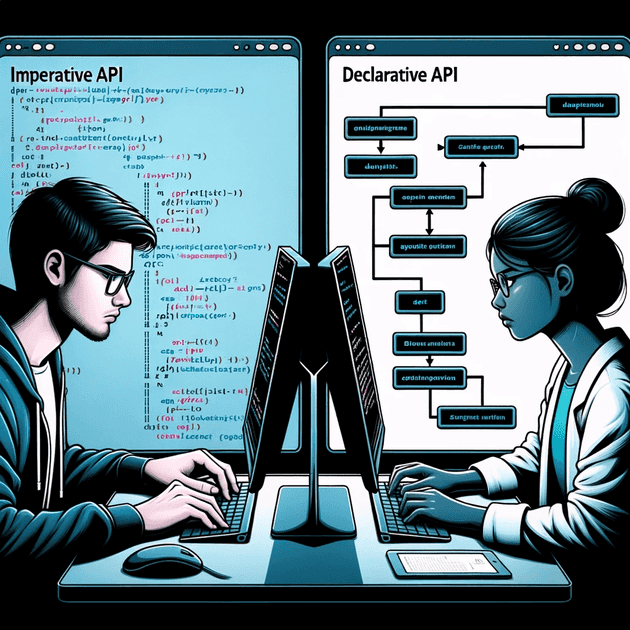When diving into software development, especially in the realm of building applications, we often come across the terms "imperative" and "declarative" programming. As we evolve our design paradigms and strive for more maintainable and intuitive code, the distinction between these two approaches becomes increasingly relevant. Particularly, this dichotomy is noticeable in the context of APIs (Application Programming Interfaces).
In this post, we’ll delve into the differences between imperative and declarative APIs, their strengths, weaknesses, and some use cases for both.
Imperative API
What is it?
At the core of imperative programming lies the "how". It is all about detailing the steps needed to achieve a result. When an API is designed imperatively, it requires the user to specify how a certain task should be done.
Characteristics:
- Step-by-step Instructions: Like a manual, the user must specify each step.
- State Management: Often, the developer has to manage the state and consider the order of operations.
- Low-level Control: Provides granular control over the logic and often offers more flexibility.
Example:
Consider a painting application where the API is imperative:
brush.selectSize(5)
brush.pickColor("red")
canvas.drawStartAt(10, 10)
canvas.drawLineTo(20, 20)Declarative API
What is it?
Declarative programming focuses on the "what". It describes the desired outcome without necessarily detailing the steps to achieve it. When an API is designed declaratively, it takes a description of the desired result and figures out the steps needed.
Characteristics:
- Outcome-Oriented: The user expresses the desired end state.
- Automatic State Management: The system handles the state and order of operations.
- Higher-level Abstraction: Can be less flexible than imperative but is often more concise.
Example:
Continuing with the painting application, a declarative API might look like:
canvas.draw({
shape: "line",
color: "red",
start: [10, 10],
end: [20, 20],
size: 5
})Strengths and Weaknesses
Imperative API
- Strengths: Fine-grained control, potentially more efficient for certain tasks, explicitness.
- Weaknesses: Can be verbose, requires manual state management, higher cognitive load.
Declarative API
- Strengths: Concise, automatic state management, easier to read and maintain.
- Weaknesses: Might hide complexities, potentially less flexible, can be harder to debug due to abstraction.
When to Use Which?
-
Imperative: When you need complete control over the sequence of operations, or when performance optimizations necessitate a specific order of operations.
-
Declarative: When you want to simplify code, improve readability, or when the process is standardized enough that you don’t need to control every step.
In Conclusion
Whether you opt for an imperative or declarative approach in your API design largely depends on your specific use case, the audience of the API, and the nature of the tasks it encompasses. Remember, the goal of any API should be to offer an effective way for developers to interact with a system. Balancing simplicity with control will help ensure your API meets its intended purpose effectively.
